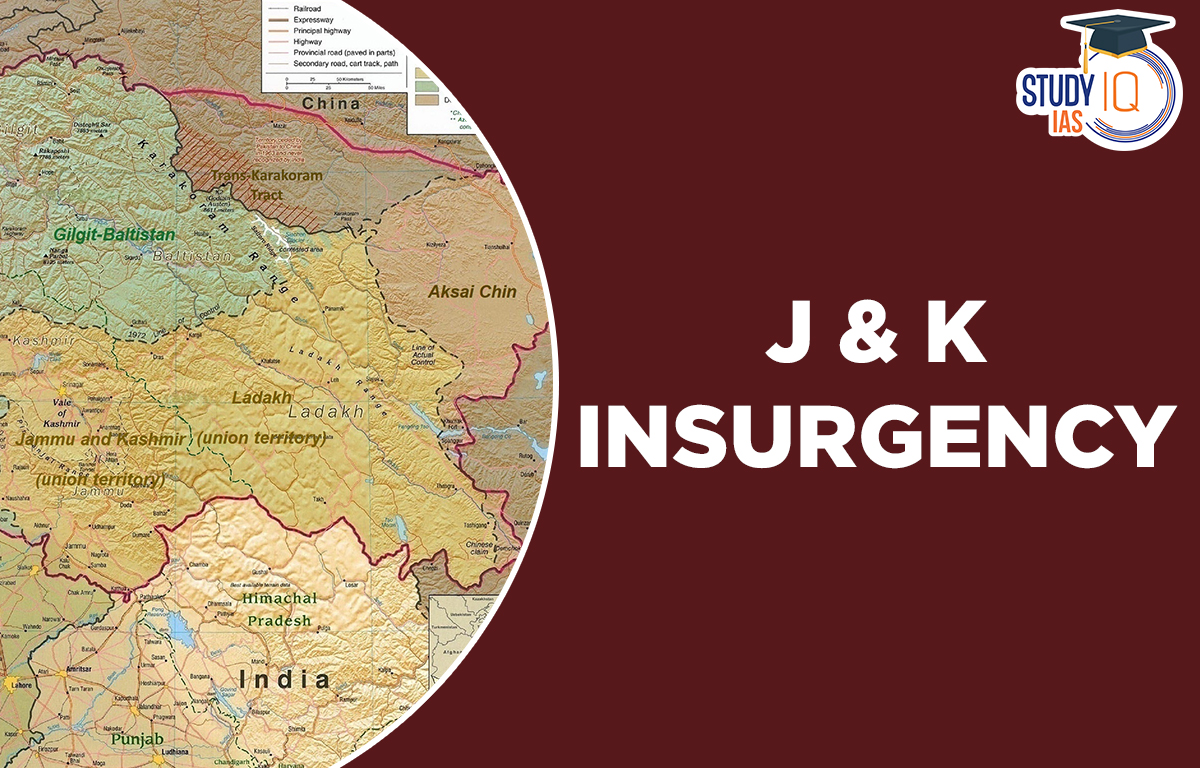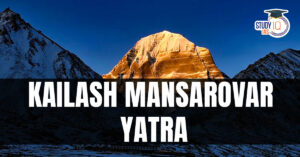Table of Contents
Context: A recent terrorist attack on a military truck in Jammu and Kashmir’s Rajouri-Poonch Sector killed five soldiers of the Indian Army.
Background: The J&K Insurgency
- First phase: It started after the India-Pakistan War of 1947-48. It was carried out by small groups of Pakistan-backed covert operatives.
- Second phase: It took place between 1960s and mid ‘60s was led by what was called “Master Cell”. The objective was to create conditions for a mass rebellion in Jammu and Kashmir.
- Third phase: It occurred between 1960s and 1971, and was led by group known as Al-Fatah that ended by the 1971 war’s end.
- Fourth phase: It was led by National Liberation Front post the 1971 war, with very little institutional support from Pakistan.
- The fifth phase: Armed insurgency:
- In 1987 elections, Jamaat-e-Islami and smaller Islamic groups came together to form Muslim United Front (MUF), a pro-secessionist party, which was expected to sweep the elections.
- However, National Conference, led by Farooq Abdulla, came to power. Supporters of MUF accused the elections of being rigged, which led to a series of demonstrations, strikes, and attacks on the Indian government.
- The opposing candidates were imprisoned. Their supporters decided to join armed militancy and formed militant groups such as JKLF and Hizbul Mujahideen.
- Sporadic killing of state’s minority population started. Later it picks speed, with large number of Kashmiri Pandits targeted for supporting Indian State.
- The Pandit community in its entirety flees the valley, fearing killings by Pakistan-backed terrorist groups.
- An estimated 10,000 youths from J&K crossed-over to Pakistan for training and procurement of arms.
- In 1995, four foreign tourists were abducted and some were killed. In 1999, Indian Airlines flight IC 814 was hijacked by Pakistan-backed operatives.
- The Indian government had to release dreaded prisoners in order to secure release of passengers of the flight.
- In late 1990s, Indian Prime Minister AB Vajpayee took the first step towards restoring peace between India and Pakistan over Kashmir.
- The Kargil war thwarted the efforts of restoring the peace.
- Post 2010, incidents of stone-pelting increased. After the killing of terrorist Burhan Wani, large protests plunged Kashmir into months of unrest.
- After abrogation of Article 370, the insurgency slowed down, due to counter-insurgency operations by the Army.
- In the past 2-3 years, terrorists have resorted to targeted killings of religious minorities, outsiders, as well as Government servants.
Factors behind Insurgency in J&K
- Limited control of India: Jammu and Kashmir had a special status under Article 370, giving the state sweeping powers. The Indian government had limited control over the state of affairs in the state.
- Support from Pakistan: Pakistani intelligence agencies have been supporting and supplying arms as well as providing training to “mujahideen” militants operating in Jammu and Kashmir.
- Religious fanaticism: The insurgency was given a religious angle with many religious leaders publicly calling for people to join the ‘religious war’.
- Porous borders: The borders of J&K have been porous, mainly due to unsettled territory dispute. This has allowed militants to enter the territory after getting training in Pakistan.
- Draconian laws: Draconian laws such as Armed Forces Special Powers Act (AFSPA) and Public Safety Act (PSA) have created some sort of discontentment against Indian administration.
Stats IQ: Recent attacks in J&K
- Rise in terrorist activities: The Union Territory has witnessed a steep rise in terrorism in 2022 compared to the corresponding period of 2021. Overall terrorist attacks have declined in the last 3 years.
- Militants killed: The number of militants neutralized by security forces has grown to 80 in 2022, from 54 in the 2021.
- Casualty: Till January 2023, seven civilians have been killed and 23 have been injured in Jammu and Kashmir. There were no casualties among security personnel.
Reasons for Increasing Terrorist Attacks in Recent Times
- Infiltration: majority of terror attacks are carried out by terrorists infiltrating through the porous LoC. They obtain their arms and training from training camps located in Pakistan.
- Lone-wolf model: The recent trends indicate lone-wolf attacks, without existence of a sophisticated module. Individual action makes it difficult for security agencies to predict new attacks.
- Access to weapons: Weapons are being provided to terrorists in J&K by their handlers using drones. Easy access to weapons has been a major challenge for security agencies.
- Public sympathy: Public sympathy allows perpetrators to hide easily after committing a crime. It becomes a challenge for security agencies to track them.
- Insider support: Terrorists have insider support, who provide them secret information about the targets. This has been seen during a spate of targeted killing of minorities.
Steps taken by the Government to tackle Insurgency in J&K

Way Forward
- Public outreach: Even though the security agencies and government are carrying out goodwill earning measures, it is not enough to stop youths from taking the path of militancy.
- There is a need for new programmes that will address the basic problems faced by the residents of the valley, including infrastructure, education and livelihood.
- De-radicalization: Radicalized youths must be given opportunity to come back into mainstream by making them undergo de-radicalisation. Access to radicalization materials must be curtailed.
- Strengthening security apparatus: It includes intelligence sharing, counter-intelligence operations and sophisticated weapons and associated technology.
- Financial sanctions: Terror groups operating in the guise of NGOs need to be sanctioned, cutting them off from foreign funding.


 India’s First Full-Stack Quantum Compu...
India’s First Full-Stack Quantum Compu...
 World Liver Day 2025, Theme, History, Ce...
World Liver Day 2025, Theme, History, Ce...
 Kailash Mansarovar Yatra to Resume Soon,...
Kailash Mansarovar Yatra to Resume Soon,...





















